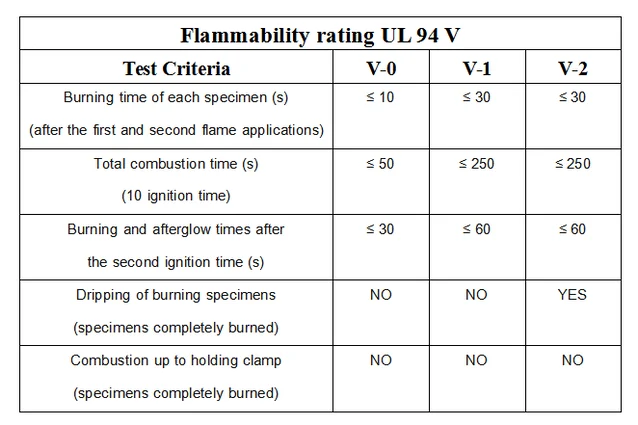Flammability is an important factor in the development and testing of products for application on electrical equipment. The IEEE 1656 guide provides a framework for assessing the fire hazards associated with electrical components and offers various testing methods to evaluate their flammability. This article will explore the different flammability testing standards under the IEEE 1656 guide, as well as explore why UL 94 V-0 is considered the gold standard.
Understanding Flammability Testing in IEEE 1656
IEEE 1656 provides guidelines for evaluating the flammability of materials used in electrical equipment. Two primary tests are used to assess the flammability of materials: the horizontal flame test and the vertical flame test.
1. Horizontal Flame Test:
The horizontal flame test evaluates the material’s flammability in a horizontal orientation. The test involves exposing the sample to a flame and observing whether it ignites and how long it continues to burn. This test only measures if the material burns when exposed to a flame. It does not provide insights into how quickly the material can self-extinguish or whether flaming droplets are produced during combustion.
2. Vertical Flame Test:
The vertical flame test is more rigorous and informative compared to the horizontal flame test. In this test, the material sample is held vertically, flammable material is placed underneath the sample, and a flame is applied to the bottom edge. Observations are made on whether the material ignites, the duration it takes to self-extinguish, and the presence of flaming droplets. The vertical flame test offers a more realistic assessment of flammability because it simulates conditions where materials might catch fire from below, a common scenario in real-world applications.
The results of the vertical flame test are categorized into three ratings: V-0, V-1, and V-2. A V-0 rating indicates the highest level of flame resistance, where the material self-extinguishes within 10 seconds, and flaming droplets are not produced. V-1 and V-2 ratings indicate progressively lower levels of flame resistance and longer self-extinguishing times.

Source: ChiuVention
UL V-0 Rating Explained
UL 94 Flame Classification is a standard for determining the flammability of plastic materials used in devices and appliances by assessing their ability to extinguish flames under controlled conditions. The UL 94 V-0 rating is widely regarded as the best indicator of a material’s flammability resistance for wildlife mitigation products. Here’s why:
1. Comprehensive Evaluation:
The vertical flame test, which leads to a UL 94 V-0 rating, provides a comprehensive evaluation of a material’s behavior when exposed to fire. The UL V-0 testing process determines whether the material self-extinguishes quickly and if flaming droplets are produced, this test offers a more thorough understanding of fire hazards compared to the horizontal flame test.
2. Realistic Simulation:
The vertical orientation used in the UL 94 V-0 test simulates real-world fire scenarios more accurately. Fires often start from below and spread upwards, making the vertical flame test more relevant for assessing the safety of materials used in electrical equipment.
3. Highest Safety Standard:
A UL 94 V-0 rating signifies the highest level of flame resistance for flame retardant materials in the IEEE 1656 guide and ensures electrical equipment fire safety. Materials with this rating self-extinguish within 10 seconds and do not produce flaming droplets, significantly reducing the risk of fire spread and secondary ignition. This makes UL V-0 rated plastics ideal for electrical equipment.

Source: Sur-Seal
Ensure Fire Safety Compliance Today
Understanding UL V-0 and other flammability testing methods will help you to ensure electrical equipment safety and reliability. At Rauckman Utility Products, we are proud to offer materials that meet the stringent UL 94 V-0 rating to ensure the highest level of fire safety for our customers. For more information or to place an order click here to get in contact with one of our representatives.


